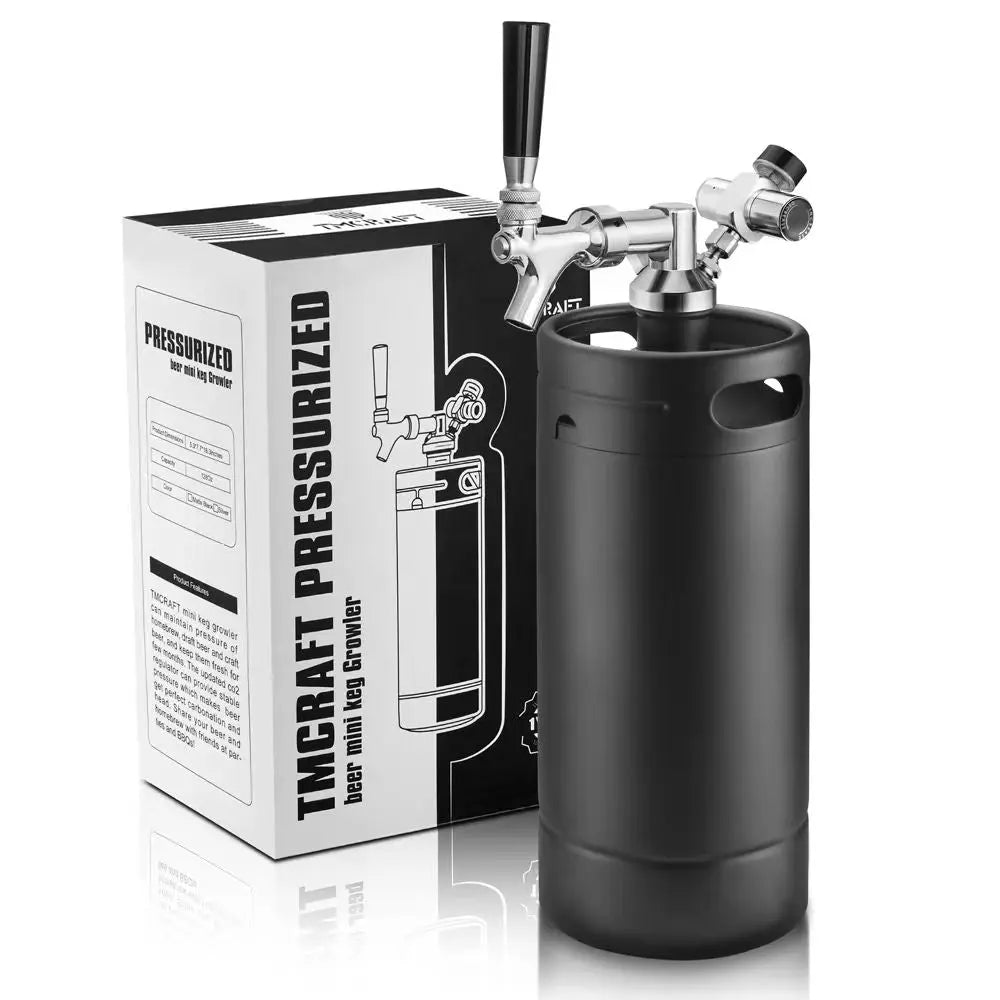5 Common Mistakes with Ball Lock Kegs (And How to Avoid Them for Perfect Beer Every Time)
 Keywords: Ball Lock Keg, Homebrewing Mistakes, Kegging Tips, TMCRAFT Ball Lock Kegs, Beer Kegging Equipment
Keywords: Ball Lock Keg, Homebrewing Mistakes, Kegging Tips, TMCRAFT Ball Lock Kegs, Beer Kegging Equipment
When it comes to homebrewing, few tools are as beloved—and as misunderstood—as the ball lock keg. They’re durable, reusable, and perfect for getting your craft beer from fermenter to faucet. But even experienced brewers fall victim to a few common mistakes that can affect the flavor, carbonation, or even safety of your beer.
Whether you're new to kegging or looking to fine-tune your system, here are five common ball lock keg mistakes and exactly how to avoid them—plus why TMCRAFT Ball Lock Kegs make a smarter choice for your setup.
⚠️ Mistake #1: Not Cleaning the Keg Thoroughly
Even a little leftover yeast or hop sediment can ruin your next batch. Residue builds up in the dip tube, poppets, or posts and contaminates fresh beer.
✅ The Fix:
Always do a full teardown of your ball lock keg between uses—removing posts, dip tubes, and O-rings. Use a no-rinse sanitizer like Star San and a soft brush to clean hard-to-reach spots.
🛠 TMCRAFT Tip: Our TMCRAFT Ball Lock Kegs are made from 304 stainless steel for easy cleaning and long-term use without corrosion or off-flavors.
💨 Mistake #2: Overcarbonating or Undercarbonating the Beer
Inconsistent carbonation is often due to improper PSI settings or not accounting for beer temperature.
✅ The Fix:
Use a carbonation chart to match PSI to your beer’s temperature. For most ales at 40°F, shoot for 10–12 PSI over 5–7 days. Or use the “burst carbonation” method—30 PSI for 24 hours, then drop to serving pressure.
🔧 TMCRAFT’s CO2 regulator system pairs perfectly with our ball lock kegs for dialed-in, consistent carbonation.
💦 Mistake #3: Leaky O-Rings and Post Seals
A small CO2 leak can flatten your beer and waste your gas tank fast. Often, it's a dry or cracked O-ring causing the problem.
✅ The Fix:
Replace old or dry O-rings and lubricate with food-safe keg lube before every use. Test seals with a spray bottle and soapy water—look for bubbles.
💡 TMCRAFT Ball Lock Kegs feature high-grade silicone O-rings that are both durable and easy to replace.
🔄 Mistake #4: Confusing the In and Out Posts
Ball lock kegs have different threading and poppet types for the gas (in) and liquid (out) posts, but they can look identical—until something doesn’t fit.
✅ The Fix:
Always label your keg or mark the posts. Or use TMCRAFT kegs—ours are clearly marked for gas and liquid and are compatible with standard ball lock fittings.
🧊 Mistake #5: Improper Cold Crashing and Transfer
Transferring beer to your ball lock keg while it's too warm—or too cold—can result in excessive foaming or poor carbonation later.
✅ The Fix:
Chill your beer to serving temp before kegging. Use closed transfer with CO2 to avoid oxygen exposure and maintain carbonation.
🧪 Want clearer beer? Try cold crashing your fermenter 24–48 hours before kegging.
Why TMCRAFT Ball Lock Kegs Are the Smart Upgrade
TMCRAFT Ball Lock Kegs are designed with homebrewer-friendly features that eliminate these mistakes before they happen:
- ✅ 304 stainless steel body and dip tubes
- ✅ Dual rubber handles for easy stacking and transport
- ✅ Clear post markings for gas and liquid lines
- ✅ Pressure-tested for safety and leak-free seals
Final Pour: Brew Smart, Pour Better
Ball lock kegs are a staple in homebrewing for a reason—but only if they’re used correctly. Avoiding these common mistakes will help you get the most out of your system and keep your beer tasting as it should—fresh, carbonated, and delicious.
Ready to level up your kegging gear? TMCRAFT has your back.

